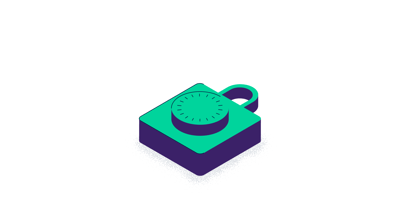October 19, 2023
 by Mara Calvello
by Mara Calvello

 Sign up for smart auditing
Sign up for smart auditing
Ensure your business isn’t wasting budget on unused tools and licenses within your tech stack.
The significance of technology in business is increasingly evident.
With its influence across all business processes like finance, time management, and workforce productivity, the need for technology is neverending. But with the rapid advances in this industry, protecting yourself from advanced security threats remains an ongoing challenge.
One of the ways organizations can invest in security is by understanding information technology audits, otherwise known as IT audits, that ensure your IT infrastructure is functional, competitive, and secure.
An IT audit is the process of examining the information technology systems, infrastructure, policies, and procedures in a company. It maintains the effectiveness, security, and compliance of an IT environment while ensuring that all employees are following the established security protocols and standards.
Tools like audit management software can enhance the effectiveness of IT audits by streamlining tasks like audit planning, risk assessment, documentation, and reporting.
By implementing IT audits, you can protect critical data and company networks from malignant attacks. After all, sometimes a data breach is all it takes to distinguish between a thriving company and the one that fails.
Since so many organizations are spending large amounts of money on information technology, they need to ensure that these IT systems are reliable, secure, and not vulnerable to cyber-attacks.
An IT audit is crucial to any business because it maintains the integrity and reliability of an organization's information technology infrastructure and data. It overlooks functions like risk assessment, data integrity, compliance, security assessment, and aid to business continuity and disaster recovery.
IT audit is also cost-effective in the sense that it will reveal exactly which services you need and which ones your company can do without. Plus, since the technology we use is evolving so fast, an IT audit can let you know which of your systems and tools are outdated.
An IT audit helps organizations to:
In addition to these benefits, IT audits also improve the trust and confidence that stakeholders have in an organization. By showcasing what an organization is doing to protect its IT assets and manage its IT operations effectively, IT audits can attract and retain customers, investors, and other stakeholders.
Conducting IT audits enables organizations to identify weaknesses in their IT systems and processes. It improves security, ensures regulatory compliance, and enhances the overall IT governance. IT auditors examine not only logical and physical security controls but also overall business and financial controls that involve information technology systems.
Since operations at modern companies are increasingly computerized, IT audits are used to ensure that information-related controls and processes are working properly. The primary objectives of an IT audit include the following:
IT audits assess an organization's security measures to ensure data protection and integrity. It reviews various aspects like network security, access control, and disaster recovery plans and offers recommendations to address any vulnerabilities, weaknesses, and compliance issues.
There are five main types of IT audits that can be broken down in one of two ways: general control review and application control review. General control applies to all areas of an organization, whereas application control pertains to transactions and data related to a specific computer-based application.
To dive deeper, the five types are:
The IT audit process usually consists of four stages: planning, fieldwork, audit report, and follow-up. The process follows the plan-do-check-act (PDCA) approach and may vary depending on the organizational needs and audit functions.
There are four main steps in an IT audit process.
The best audit management software helps you do all of these with ease using automations and other features.
When you don’t want to perform an IT audit yourself, it’s in your best interest to hire an IT auditor. It’s their job to examine not only physical security controls but also overall business and financial controls that involve the entire information technology system.
When you hire an IT auditor, they will need to identify five items in order to accurately gather the necessary information:
Once the IT auditor has identified, documented, summarized, and presented the audit findings to shareholders, they will also share any recommendations they have based on the results. It is also their job to deal with business ethics, risk management, business processes, and governance oversight.
If you need a framework for conducting your first IT audit, take a look at this distilled IT audit checklist below. It covers the fundamental areas of an IT audit including:
1. IT governance and policiesThe specifics of your IT audit will vary depending on your organizational needs and regulatory requirements, but these are the basic areas that must be covered in all audits.
When you utilize G2 Track, all of the crucial steps within an IT audit are in one seamless, well-thought-out place.
In your G2 Track dashboard, you’ll be able to:
Essentially, a SaaS system of record like G2 Track has all of the features you need to conduct an IT audit. With all of this information in one seamless dashboard, it’s easier than ever to manage software spend, contracts, account usage, compliance, and more.
A successful IT audit will give you the information and data you need to ensure that your infrastructure, policies, and operations are all exactly where they need to be.
These audits are your way of knowing that the controls in place are working to protect the company’s assets and the integrity of the data and remain in line with the objectives of the company. It’s just one more way you can work to keep all sensitive data on lock.
There's no denying that software has a lot of moving parts. Let G2 Track help! Sign up for a free demo to see how you can keep track of your software spending with ease.
Mara Calvello is a Content and Communications Manager at G2. She received her Bachelor of Arts degree from Elmhurst College (now Elmhurst University). Mara writes content highlighting G2 newsroom events and customer marketing case studies, while also focusing on social media and communications for G2. She previously wrote content to support our G2 Tea newsletter, as well as categories on artificial intelligence, natural language understanding (NLU), AI code generation, synthetic data, and more. In her spare time, she's out exploring with her rescue dog Zeke or enjoying a good book.
 Sign up for smart auditing
Sign up for smart auditing
Ensure your business isn’t wasting budget on unused tools and licenses within your tech stack.
There are certain societal expectations everyone follows without question. Stopping your car...
 by Mara Calvello
by Mara Calvello
Your company stores a lot of personal data in its SaaS applications.
 by Mara Calvello
by Mara Calvello
Think of all of the data stored within your company’s tech stack.
 by Mara Calvello
by Mara Calvello
There are certain societal expectations everyone follows without question. Stopping your car...
 by Mara Calvello
by Mara Calvello
Your company stores a lot of personal data in its SaaS applications.
 by Mara Calvello
by Mara Calvello


